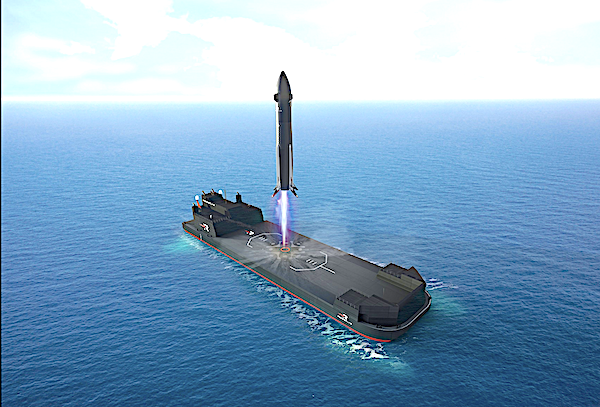

Rocket Lab USA, Inc. (Nasdaq: RKLB), a global provider in launch services and space systems, shared details about ‘Return On Investment’, the ocean landing platform for Neutron missions returning to Earth.
Rocket Lab’s Neutron rocket is a reusable carbon composite medium-lift launch vehicle being developed to meet the demand for single and multi-satellite constellation deployment, high assurance national security missions, and cargo to various Earth orbits, as well as lunar and interplanetary exploration. Capable of deploying payloads up to 33,000 pounds (15,000 kg), Neutron is being brought to the market at a rapid development pace on the foundation of Rocket Lab’s industry leadership as one of the world’s most frequent and reliable launch providers.
Neutron can perform two reusable mission profiles depending on mission requirements. This includes Return To Launch Site (RTLS) missions for Neutron first stage propulsive landings at Rocket Lab Launch Complex 3 in Virginia. The second reusable mission profile, a Down Range Landing (DRL) maneuver, is intended to maximize Neutron’s performance and will result in Neutron’s precise propulsive landing at sea on the landing platform.vb
Rocket Lab Founder and CEO, Sir Peter Beck, says: “We’re working hard to bring Neutron online with one of the fastest development schedules in history for a new rocket, because we know medium-lift launch opportunities are limited and space access is being stifled. Neutron’s debut launch planned for later this year will help to ease that bottleneck, and our new landing platform will open space access even further by enabling even more mission opportunities that require maximum Neutron performance.”
Rocket Lab currently expects Neutron to make its debut launch from Virginia in the second half of 2025.
‘Return On Investment’ is Rocket Lab’s sea-based landing platform for Neutron, the Company’s new reusable 141 ft (43 m) medium-lift rocket currently in development. Operated out of the U.S. East Coast, the landing platform is built upon a modified barge – the ‘Oceanus’ supplied by Canal Barge Inc., a New Orleans-based, private marine transportation company – and named after the Greek Titan Oceanus, the personification of the Oceanus River that the Greeks believed encircled the entire world. ‘Return On Investment’ will be customized with propulsion systems to maintain the platform’s target position and thermal protection systems to conserve electrical and other support equipment installed on the deck. ‘Return On Investment is expected to enter service in 2026.
